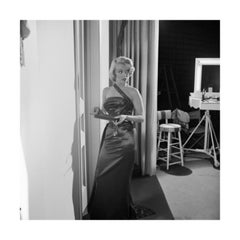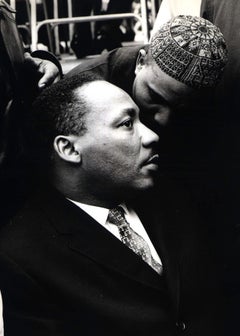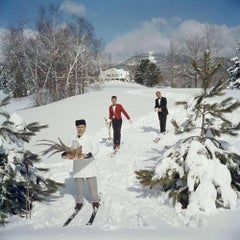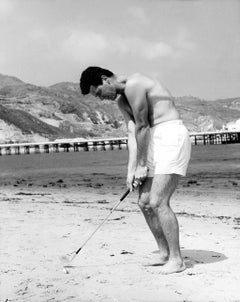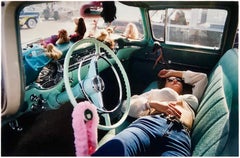Paper Portrait Photography
1950s Contemporary Paper Portrait Photography
Archival Ink, Archival Paper, Digital, Archival Pigment
1960s Contemporary Paper Portrait Photography
Archival Ink, Archival Paper, Archival Pigment
20th Century American Modern Paper Portrait Photography
Photographic Paper, Color, C Print, Digital
1950s Contemporary Paper Portrait Photography
Archival Ink, Archival Paper, Archival Pigment
1950s Contemporary Paper Portrait Photography
Archival Paper, Archival Ink, Archival Pigment
Early 2000s Contemporary Paper Portrait Photography
Photographic Paper, C Print, Color, Silver Gelatin
1980s Contemporary Paper Portrait Photography
Photographic Paper
Early 2000s Contemporary Paper Portrait Photography
Archival Paper, C Print, Color, Polaroid
1950s Contemporary Paper Portrait Photography
Archival Ink, Archival Paper, Digital, Archival Pigment
2010s Contemporary Paper Portrait Photography
Archival Paper, C Print, Color, Polaroid
1950s Contemporary Paper Portrait Photography
Archival Ink, Archival Paper, Digital, Archival Pigment
1950s Contemporary Paper Portrait Photography
Archival Ink, Archival Paper, Digital, Archival Pigment
2010s Contemporary Paper Portrait Photography
Archival Ink, Archival Paper, Color, Archival Pigment
Early 2000s Contemporary Paper Portrait Photography
Archival Paper, Photographic Paper, C Print, Color, Polaroid
2010s Contemporary Paper Portrait Photography
Plexiglass, Archival Paper, C Print
1940s Contemporary Paper Portrait Photography
Archival Paper, Archival Ink, Archival Pigment
Early 2000s Contemporary Paper Portrait Photography
C Print, Photographic Paper, Color
20th Century American Modern Paper Portrait Photography
Photographic Paper, Color, Digital
1960s Contemporary Paper Portrait Photography
Archival Ink, Archival Paper, Archival Pigment
1950s Contemporary Paper Portrait Photography
Archival Ink, Archival Paper, Digital
Early 2000s Contemporary Paper Portrait Photography
Photographic Paper, C Print, Color, Silver Gelatin
1960s Contemporary Paper Portrait Photography
Archival Ink, Archival Paper, Archival Pigment
Early 2000s Contemporary Paper Portrait Photography
Photographic Paper, Archival Paper
2010s Contemporary Paper Portrait Photography
Archival Ink, Archival Paper, Color, Archival Pigment
1980s Contemporary Paper Portrait Photography
Archival Ink, Archival Paper, Archival Pigment
21st Century and Contemporary Contemporary Paper Portrait Photography
Photographic Paper, C Print, Color, Silver Gelatin
1960s Contemporary Paper Portrait Photography
Archival Ink, Archival Paper, Archival Pigment
1960s Contemporary Paper Portrait Photography
Archival Ink, Archival Paper, Archival Pigment
1950s Contemporary Paper Portrait Photography
Archival Ink, Archival Paper, Digital, Archival Pigment
21st Century and Contemporary Contemporary Paper Portrait Photography
Photographic Paper, C Print
1960s Contemporary Paper Portrait Photography
Archival Ink, Archival Paper, Archival Pigment
1960s Modern Paper Portrait Photography
Photographic Paper
1980s Modern Paper Portrait Photography
Photographic Paper
1930s Contemporary Paper Portrait Photography
Archival Ink, Archival Paper, Digital, Archival Pigment
1960s Contemporary Paper Portrait Photography
Archival Ink, Archival Paper, Archival Pigment
1950s Modern Paper Portrait Photography
Photographic Paper
2010s Contemporary Paper Portrait Photography
Archival Ink, Archival Paper, Photographic Paper, Archival Pigment
1970s Contemporary Paper Portrait Photography
Photographic Paper
1990s Contemporary Paper Portrait Photography
Archival Paper, Photographic Paper, C Print, Color, Polaroid
2010s Contemporary Paper Portrait Photography
Archival Paper, Black and White, Giclée, Pigment, Archival Pigment, Phot...
1960s Contemporary Paper Portrait Photography
Photographic Paper
1930s Contemporary Paper Portrait Photography
Archival Ink, Archival Paper, Archival Pigment
1920s Contemporary Paper Portrait Photography
Archival Ink, Archival Paper, Digital, Archival Pigment
1920s Contemporary Paper Portrait Photography
Photographic Paper
Early 2000s Contemporary Paper Portrait Photography
Parchment Paper, Photographic Paper, C Print, Color, Polaroid
1960s Contemporary Paper Portrait Photography
Archival Ink, Archival Paper, Digital, Archival Pigment
1960s Contemporary Paper Portrait Photography
Photographic Paper
1980s Contemporary Paper Portrait Photography
Photographic Paper
1950s Contemporary Paper Portrait Photography
Archival Ink, Archival Paper, Digital, Archival Pigment
2010s Contemporary Paper Portrait Photography
Archival Paper, Photographic Paper, Black and White, Giclée, Pigment, Ar...
1930s Contemporary Paper Portrait Photography
Archival Ink, Archival Paper, Archival Pigment
1960s Modern Paper Portrait Photography
Photographic Paper, Silver Gelatin
20th Century Modern Paper Portrait Photography
Photographic Paper
1960s Contemporary Paper Portrait Photography
Archival Ink, Archival Paper, Digital, Archival Pigment
1930s Contemporary Paper Portrait Photography
Archival Ink, Archival Paper, Digital, Archival Pigment
1940s Contemporary Paper Portrait Photography
Archival Ink, Archival Paper, Archival Pigment
1950s Contemporary Paper Portrait Photography
Archival Ink, Archival Paper, Digital, Archival Pigment
1960s Contemporary Paper Portrait Photography
Photographic Paper
1880s Modern Paper Portrait Photography
Photographic Paper
1950s Contemporary Paper Portrait Photography
Archival Ink, Archival Paper, Archival Pigment
